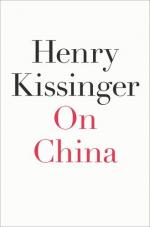
|
| Name: _________________________ | Period: ___________________ |
This test consists of 5 multiple choice questions, 5 short answer questions, and 10 short essay questions.
Multiple Choice Questions
1. The ____ Emperor is considered to be the founder of China.
(a) Blue.
(b) Red.
(c) Yellow.
(d) Orange.
2. The Count managed to open Urga, which is located in which region?
(a) Burma.
(b) North Vietnam.
(c) Hong-Kong.
(d) Mongolia.
3. What word is best used to describe Li Hongzhang?
(a) Cautious.
(b) Ambitious.
(c) Worldly.
(d) Timid.
4. China is referred to as being a ____ society.
(a) Libertarian.
(b) Matriarchal.
(c) Patriarchal.
(d) Socialist.
5. In what year did Zheng He's expeditions stop abruptly?
(a) 1473.
(b) 1433.
(c) 1529.
(d) 1381.
Short Answer Questions
1. The first major attempt to right things with China was led by Britain's Lord George ______.
2. What was the time period of the Song Dynasty?
3. Which is not one of the nomadic groups mentioned?
4. In what year did the French Jesuit Jean-Baptiste Du Halde write about China?
5. The ministry's new name translated into:
Short Essay Questions
1. The Chinese are very involved in strategy. Examine the Chinese use of strategy and the types of games in which it is employed.
2. How did China perceive Europe? What was Britain's goal?
3. What did China do to compete with Japan and Russia? When did the Chinese realize that they were not all powerful?
4. What does Kissinger say about the beginning of the decline of China?
5. How does the existence and myth of the Yellow Emperor relate to the history of Confucius?
6. How and why does Kissinger compare Confucius to Machiavelli?
7. How did the Japanese culture compare and contrast to the Chinese culture?
8. The culmination of Chinese warring was two and a half centuries of turmoil. To what does Kissinger compare this era?
9. Discuss China's long experience with naval expeditions and exploits.
10. What was Prince Gong's plan? Who emulated Prince Gong's work?
|
This section contains 1,041 words (approx. 4 pages at 300 words per page) |

|




